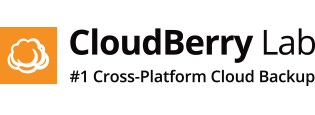Five Tips: Managed Services Marketing
While some Web sites go dark during holiday weeks, MSPmentor will continue to bring you fresh content. Over the next week, we'll offer five basic tips on: Marketing (Dec. 22) Sales (Dec. 23) PR (Dec. 24) Leveraging Web 2.0 Technologies (Dec. 26)

 While some Web sites go dark during holiday weeks, MSPmentor will continue to bring you fresh content. Over the next week, we’ll offer five basic tips on:
While some Web sites go dark during holiday weeks, MSPmentor will continue to bring you fresh content. Over the next week, we’ll offer five basic tips on:
Marketing (Dec. 22)
Sales (Dec. 23)
PR (Dec. 24)
Leveraging Web 2.0 Technologies (Dec. 26)
Let’s kick things off with marketing — which often represents a managed service provider’s greatest challenge. Your target customers need to hear your marketing messages at least seven times to influence a buying decision, according to About.com.
Alas, many MSPs don’t develop effective brands, market positions or communication strategies. But some MSPs really understand the value of effective marketing. Here are five tips to get you started.
1. Start From Scratch: What’s your brand? What’s your elevator pitch? How do you describe your business to potential customers in one minute or less? Not sure where to start? Visit such Websites as Master IT, Everon Technology Services and inhouseIT.
In particular, check out the simple but strong company logos and taglines, such as inhouseIT: Your Technology Department. That three-word description perfectly captures inhouseIT’s business focus and core mission.
2. Write A Plan, Develop A Budget: Yes, your annual budget actually needs a line item called “Marketing and Advertising.” And that line item should gradually increase as your annual sales increase. This “Marketing Basics” article from About.com gives you the framework to get started.
3. Think Outside of Technology: Download a free PDF called The New Rules of Viral Marketing. From best-selling author David Meerman Scott, the free PDF explains how you can develop effective messaging and then spread those messages — either by word of mouth or on the web.
You’ll notice the PDF isn’t written for MSPs. Instead, it’s designed for a general business audience. I strongly recommend that MSPs spend more time reading general-interest business books, magazines and Web sites that cover small business marketing and business operations. A few of my favorites include bMighty, Mary Schmidt Marketing Troubleshooter and Startup Spark.
4. Drive What You Sell: I’m a big fan of being seen and being heard. Transform your daily commute and customer visits into non-stop branding opportunities. Investigate advertising wraps that turn your company’s mobile fleet into tasteful and effective billboards.

5. Measure Everything: Whether you’re doing an online marketing campaign or participating in a trade show, you need to measure exactly how much you’re spending on marketing and the return on investment.
How many business contacts did you get?
How many of those contacts turned into qualified sales leads?
How many of those sales leads turned into face-to-face meetings?
How many of those face-to-face meetings turned into actual sales?
If you measure your marketing programs from the start, you can begin to analyze the cost effectiveness of one program (say, online marketing) vs. another (say, face-to-face conferences).
MSPmentor is updated multiple times daily. Don’t miss a single post. Subscribe to our Enewsletter, RSS and Twitter feeds.
About the Author(s)
You May Also Like


